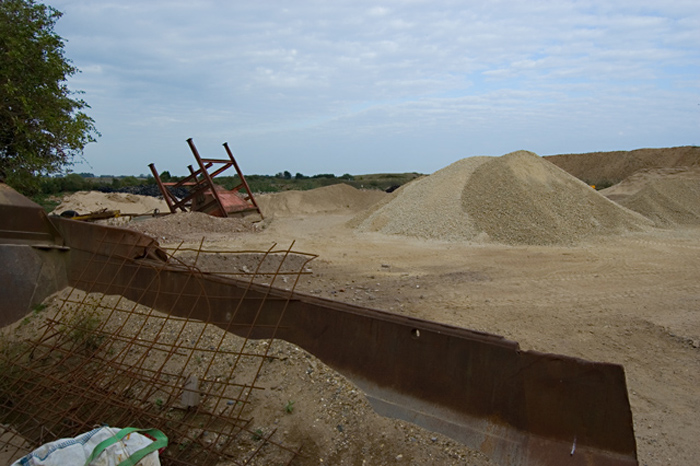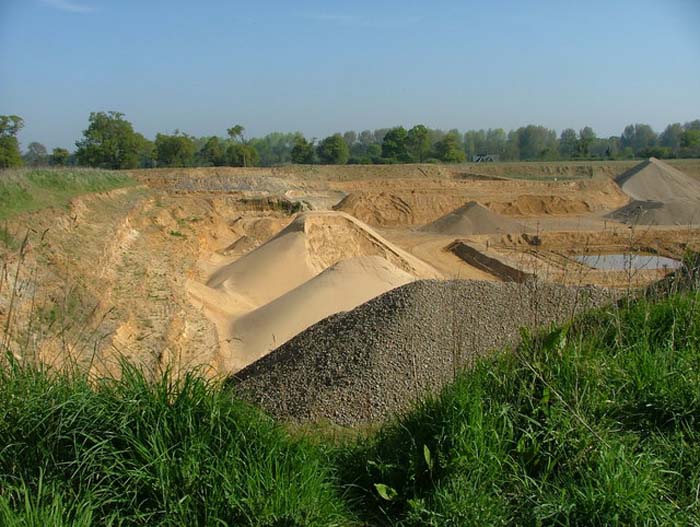
In many different contexts, sand and gravel help improve drainage. As a result, they are essential landscape and building materials. If you know what they are and how they work, you can choose them wisely for infrastructure, foundation work, and gardens.
Sand for drainage
Tiny mineral and rock particles form the fine aggregate known as sand. People commonly use it to improve soil drainage because it readily allows water to flow through. This helps prevent waterlogging and promotes healthy roots in landscapes and gardens. Adding sand to heavier soils, such as clay, can improve drainage and aeration by increasing porosity.
Gravel for drainage
Small stones and pebbles make up the bulk of gravel, a coarse aggregate. Its larger empty holes make it an excellent drain, allowing water to flow through faster. Drainage systems like retaining walls, dry wells, and French drains commonly use gravel to prevent water from pooling. It is also frequently used in buildings to strengthen their foundations and reduce their vulnerability to water damage.
Depending on the intended use and results, sand or gravel is more suitable for drainage. Consider these points:
Sand or gravel – which is better for drainage?
Gravel for Drainage
- Stability
When it comes to structural support, gravel is superior because it is stable and won’t shift or compact with time.
Higher flow rates
Grit is great for high-volume drainage applications because water passes through it quickly because of the larger particle size.
- Applications
Notable uses include backfilling around retaining walls and foundations, drainage trenches, and French drains.
- Bigger spaces
Gravel facilitates quick water drainage by expanding the spaces between particles.
Sand for Drainage
- Filtered drainage
By filtering out specific sediments and pollutants, the material can lessen the chance of downstream systems becoming clogged.
- Finer Particles
Because its particles are smaller and there are fewer gaps between them, sand drains more slowly than gravel.
- Compaction
Compaction is more likely to occur in sand, which could eventually limit drainage.
- Applications
It is frequently used where water control and partial filtration are required, such as golf course bunkers, pavers, and septic system leach fields.
Making a choice between gravel and sand
- Sediment control
Sand could work better than other materials for filtering sediment.
- Water volume:
Gravel is usually the preferable choice when dealing with large volumes of water.
- Support and location
Using gravel can improve drainage systems’ structural integrity near retaining walls or foundations.
Combined Strategy
For certain uses, a layered approach could be the way to go.
- Top layer of sand
It helps prevent clogging while also providing some filtration.
- Base layer of gravel
Offers both stability and quick drainage.
Should I use large or small rocks for drainage?
Whether or not your drainage system calls for rocks depends on its intended use and setting. To help you decide between big and small rocks, below is a general outline:
- Gravel and small rocks
They are typically used as a top layer in areas that require more precise drainage. Although smaller rocks allow less room for water to move, they can help prevent soil from compacting. These are common when you need to level out a slope or keep larger boulders from becoming visible or dislodging.

- Large rocks
They are commonly utilized in a drainage system’s base layer to make room for water to flow. They are great for drainage because they allow water to drain through them easily without catching. This rock can be found at the base of retaining walls, dry wells, and French drains.
How to decide
Drainage Requirements
Larger boulders are typically preferred where high-capacity drainage is necessary, such as in a retaining wall or French drain.
Preventing Erosion and Leveling Surfaces
Gravel or smaller rocks are an excellent choice if preventing soil erosion or making a smooth surface is your primary focus.
Combination Strategy
The best approach may be to use a mix of the two for certain tasks. One method involves placing bigger rocks at the bottom to facilitate drainage and then covering them with smaller gravel or rocks to ensure stability and uniformity.
When strong drainage is required, big rocks are the way to go, while smaller rocks offer surface stability and greater control. For the best outcomes, consider using a combination strategy. If you still need to figure out how to address your unique problems, seek the advice of an expert in landscape drainage or design.
The best gravel for draining water around the house
Gravel’s superior drainage qualities make it a popular material and landscaping application. There are a few different kinds of gravel to think about when deciding how to direct water away from home:
- Base Gravel
Base gravel, a mixture of crushed stones of varying sizes, provides a stable surface and high drainage properties. It’s a common material for pathways and driveways surrounding homes.
- River Rock
River rock, similar to pea gravel but with bigger, smoother stones, is more rustic. It is not only aesthetically pleasing but also provides excellent water drainage.
- Pea Gravel
Garden beds and drainage projects frequently use this smooth and rounded gravel. It adds aesthetic value to the landscape and facilitates water flow.
- Crushed Stone
Crushed stone, a byproduct of rock quarrying, is widely used as driveway bases, French drains, and drainage ditches due to its high drainage capacity. Thanks to its angular edges, it compacts well, offers stability, and allows water to flow through.
For water drainage applications, consider building a drainage system, like a dry creek bed or a French drain, to manage water flow and avoid pooling around the foundation of your house. To prevent soil erosion and keep the drainage system in good working order, ensure the grading is correct and consider putting geotextile fabric underneath the gravel.
Choosing Between Sand and Gravel
Your project’s unique requirements will determine whether sand or gravel is better. Sand could be ideal for promoting plant growth and improving soil drainage. Gravel with larger particles provides more stability and better water flow for construction operations or heavy-duty drainage systems. In layered drainage systems, the two materials can complement one another for the best possible outcome.
